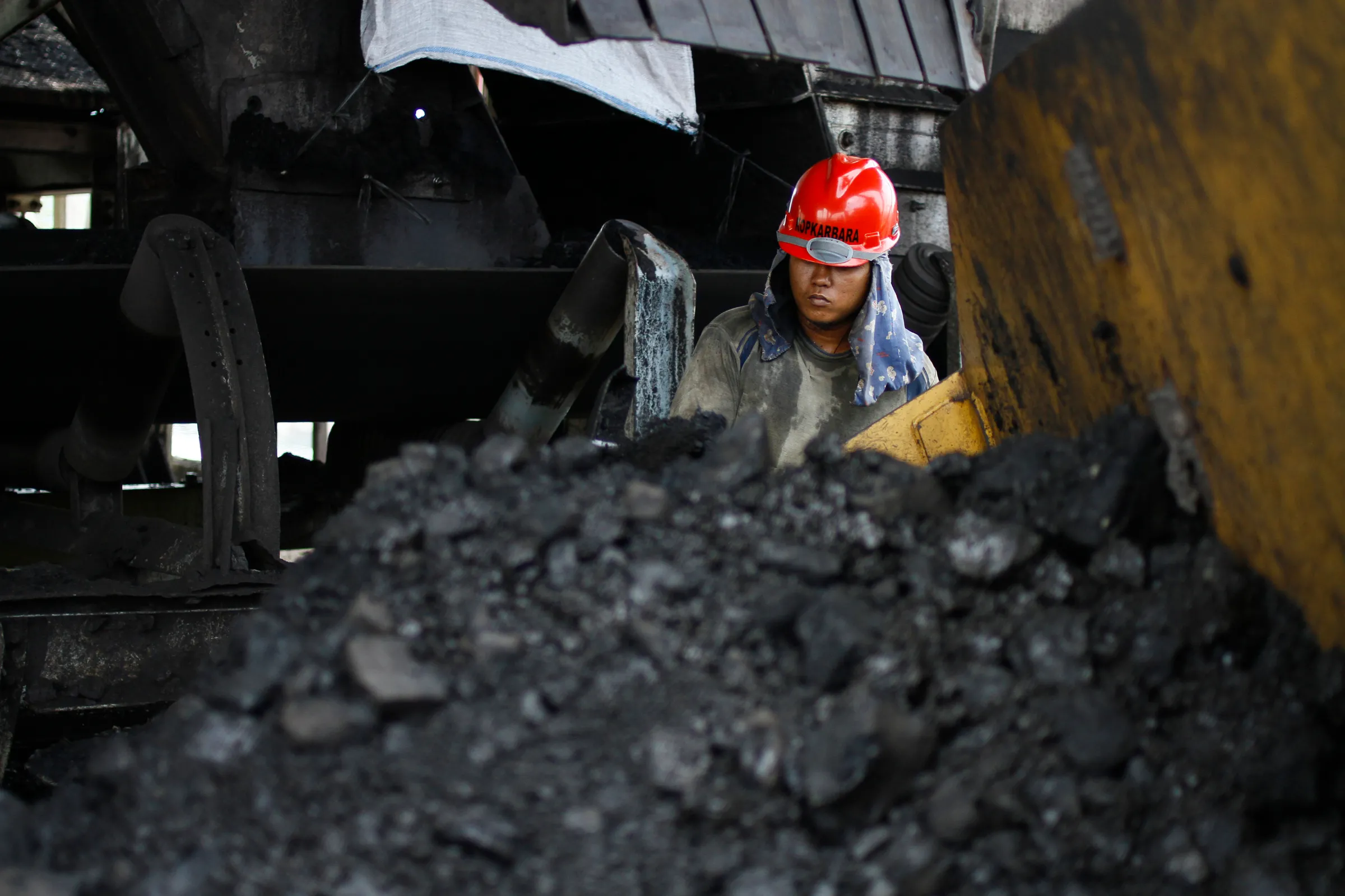Can Indonesia cut coal by partnering with the rich?

A coal worker cleans a conveyor belt at the Tarahan coal port in Lampung province, Indonesia August 20, 2011. REUTERS/Dwi Oblo
What’s the context?
Indonesia targets net zero by 2060, but environmentalists worry about slow renewables growth and reliance on biofuels
- Jakarta has big green dreams - can they come true?
- Environmentalists say progress on renewables too slow
- Rich nations and banks help but target is ambitious
JAKARTA - Indonesia has pledged to hit net zero emissions by 2060, banking on renewable energy and sustainable fuels to replace coal and hit a target that most environmentalists say is out of reach.
During the recent COP29 climate summit in Baku, Jakarta reiterated a pledge to wean itself off coal power, reach 75 gigawatts of renewables in the next 15 years and to phase out fossil-fuel power plants.
To support Indonesia, the Group of Seven countries, multilateral banks and private lenders agreed in 2022 to mobilise $20 billion under the Just Energy Transition Partnership (JETP).
Here's how that partnership works and its chances of success.
What is the Just Energy Transition Partnership?
Just Energy Transition Partnerships (JETPs) are funding packages from wealthy governments and banks to help poorer, coal-dependent nations transition to renewable energy.
As of June, Indonesia had received $284 million from donor countries and multilateral banks.
The money is managed by the JETP Secretariat under Indonesia's Ministry of Energy Mineral Resources, tasked with expanding renewable energy and phasing out coal power plants.
It funds 32 programmes, including research on retiring coal plants and decarbonising infrastructure, and feasibility studies on onshore wind farms and geothermal projects.
One of the largest coal producers in the world, Indonesia has about 250 coal-fired power plants that generate more than 45 gigawatts, according to Global Energy Monitor, an environmental non profit.
Coal makes up 62% of all its energy, it said.
The government says it needs at least 428 trillion Indonesian rupiah ($27 billion) to decommission 13 coal-fired power plants by 2030, and 3,500 trillion rupiah ($220 billion) to retire the rest, according to Ministry of Finance.
Can Indonesia meet its renewable energy target?
The JETP calls for renewable energy to comprise at least 25% of its power generation by 2025 and 44% by 2030, including solar, wind, geothermal and bioenergy derived from plants.
Indonesia has said power sector emissions will peak by 2030, but has fallen behind its renewable targets, achieving 13.1% of its energy from renewables last year against a 17.87% target.
Indonesia has identified 15 gigawatts of coal power plants for early retirement under the JETP, with a 660-megawatt plant in West Java earmarked as the first, due to be axed by 2035.
But the government and Asia Development Bank have yet to reach agreement with its operator on costs.
The renewable energy sector has logged sluggish annual growth of 0.8% on average in 2014-2021, according to the Ministry of Environment and Mineral Resources.
Why is Indonesia's JETP controversial?
Activists and researchers have criticised the JETP exclusion of off-grid coal power plants, which the country uses to power industrial complexes including mineral refineries
The country excludes 132 off-grid power plants.
Indonesia had 22.8 gigawatts of off-grid coal plants in 2023 and plans to add at least another 20 gigawatts in coming years.
Climate Action Tracker, a non-profit group, projected that emissions from captive coal plants could reach 150 million tonnes of CO2 in 2030, hampering its net zero emissions goal.
Indonesia also plans to use bioenergy derived from wood pellets to co-fire power plants, which can lower harmful emissions by plants but can also encourage deforestation that in turn drives up CO2 emissions.
It is also expanding a large coal power plants in Banten, a region that already has excess electricity.
State-owned electricity company PT PLN has pledged to ramp up renewables and ensure that 75% of the electricity it generates will come from renewable energy by 2060.
How could Indonesia's energy transition impact its people?
By reducing emissions and reaching net zero, Indonesia can reduce costly oil imports and cut household energy bills, according to the International Energy Agency.
A study in 2023 by the Institute for Essential Services Reform, a think-tank, said it could save 180,000 lives and $100 billion in costs if it cancels new coal power plants by 2040.
Indonesia's clean energy sector could create nearly 100,000 high-skilled jobs in coal regions by 2030 if renewable plans go ahead, according to a report by the think-tank Ember Energy.
However, JETP has come under criticism for failing to mitigate potential job losses in Indonesian coal communities, and the Jakarta-based think-tank Center for Economic and Law Studies said more should be done to reskill, retrain and redeploy.
(Reporting by Adi Renaldi; Editing by Jack Graham and Lyndsay Griffiths.)
Context is powered by the Thomson Reuters Foundation Newsroom.
Our Standards: Thomson Reuters Trust Principles
Tags
- Clean power
- Fossil fuels
- Net-zero
- Carbon offsetting
- Climate solutions

















